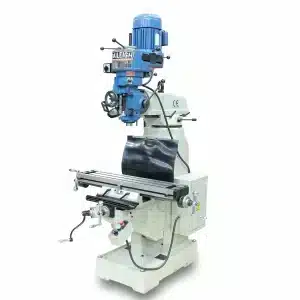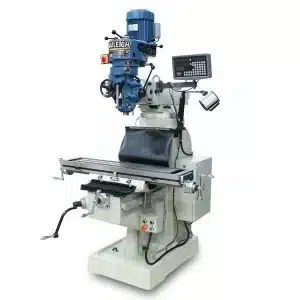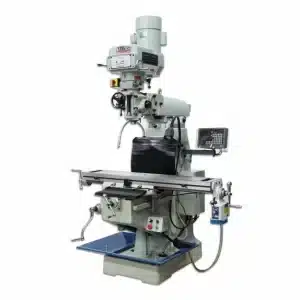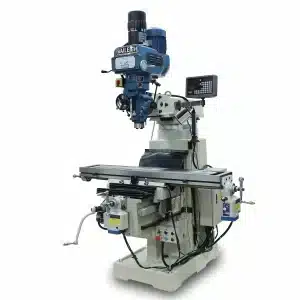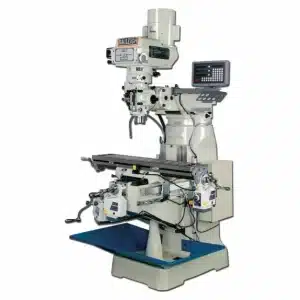Introduction to Mill Drill Machinery
A Mill Drill is a type of cutting tool that has similar traits to both still bits and end mills. Its flutes have been designed with sharp cutting edges which are the same as those on end mills. Also, these flutes have a pointed tip—similar to that of a drill bit. These features combined make Mill Drills incredibly unique; they can cut vertically like a drill bit, while also having the ability to side mill as an end mill does.
Alongside being able to cut small holes, the machine can also be used to spot drill locations for larger holes. Due to the fact that the tools are shorter compared to standard-length drill bits, there is often a higher level of accuracy when it comes to drilling small holes. With the ability to side mill too, Mill Drills are perfect for cutting inner chamfers on the inner edge of a cut.
The sharp point on a Mill Drill’s cutting tools is also very useful. It can be used to perform many different cutting operations. During the side milling process, the sharp tip is ideal for cutting “V” shaped notches. It can also, as previously mentioned, be used as a spot drill. Once you have finished cutting or drilling your component, you can even use the sharp point to engrave designs or wording onto its surface.
Working Mechanism and Applications
A Mill Drill’s principle of operation is the same as a Drill Press; however, a milling drilling machine has a lot more freedom since you can change the cutting direction and angle during operation. A Mill Drill can cut in the x, y, or z axis. Basically, they can cut in any direction.
A Mill Drill work table can be moved by the operator, enabling them to use the Mill Drill to cut across the faces of the workpiece as well as drill into it. Mill Drill heads are designed to withstand sideways and angled forces that are caused when face milling and chamfering.
Key Features To Consider
Generally, Mill Drills are more positionally accurate because the work table is designed to clamp the work and then move it very precisely in three dimensions. This allows for repeated machining of stock with a high degree of accuracy.
Production volume is an important consideration in terms of cost and time. If you need to carry out a large number of cutting or drilling tasks the time taken by the operator for machine setup can be significant. Irregular objects are more difficult to clamp accurately than symmetrical stock. If you have a large production volume and hard-to-clamp objects, it’s better to use a milling drilling machine to drill vertical holes because you can precisely correct clamping alignment by adjusting the work table position.
Mill Drills are more expensive but are more versatile. For high-precision, high-value work a Mill Drill is likely to be the best choice. A Mill Drill will give you a more precise and accurate result, but this may not be necessary depending on the engineering tolerances you require.
If you visit any machine shop you will usually find Mill Drills because they are more accurate and more versatile, enabling you to complete a wide range of machining jobs.
Safety and Maintenance Recommendations
These are safety guidelines to follow when operating a Mill Drill:
- This machine is designed and intended for use by properly trained and experienced personnel only. If you are not familiar with the proper safe use of mill/drills, do not use this machine until proper training and knowledge have been obtained.
- Safety guards must be kept in place and be in working order. Before turning on the machine, check to see that any adjusting wrenches are safely stored.
- Make sure the switch is in the OFF position before servicing the machine and after each use.
- Check for damaged parts. Check for alignment of moving parts, breakage of parts, mounting, and any other condition that may affect the tool’s operation.
- Wear proper PPE. Loose clothing, gloves, neckties, rings, bracelets, or other jewelry may get caught in moving parts. Non-slip footwear is recommended. Wear a protective hair covering to contain long hair. Do not wear any type of glove. Always use safety glasses. Everyday glasses only have impact-resistant lenses; they are not safety glasses.
These are safety maintenance to follow when operating a Mill Drill:
- Lubricate ball oilers with the X/Y-axis hand wheels, the oiler at the raising/lowering crank handle, and the oiler in front of the bed once daily with Mobil Oil Heavy Medium.
- Lubricate the table ways once daily with Mobil Oil Heavy Medium.
- If the head does not rise or lower smoothly, apply Mobilith AW-2 to the rack and Mobil Oil Heavy Medium to the column.
- If the feed handles do not turn smoothly, apply Mobilith AW-2 to the cross and longitudinal lead screws. Access the cross-lead screw by moving the table forward and removing the way cover.
- The spindle bearings are permanently sealed and require no lubrication.
